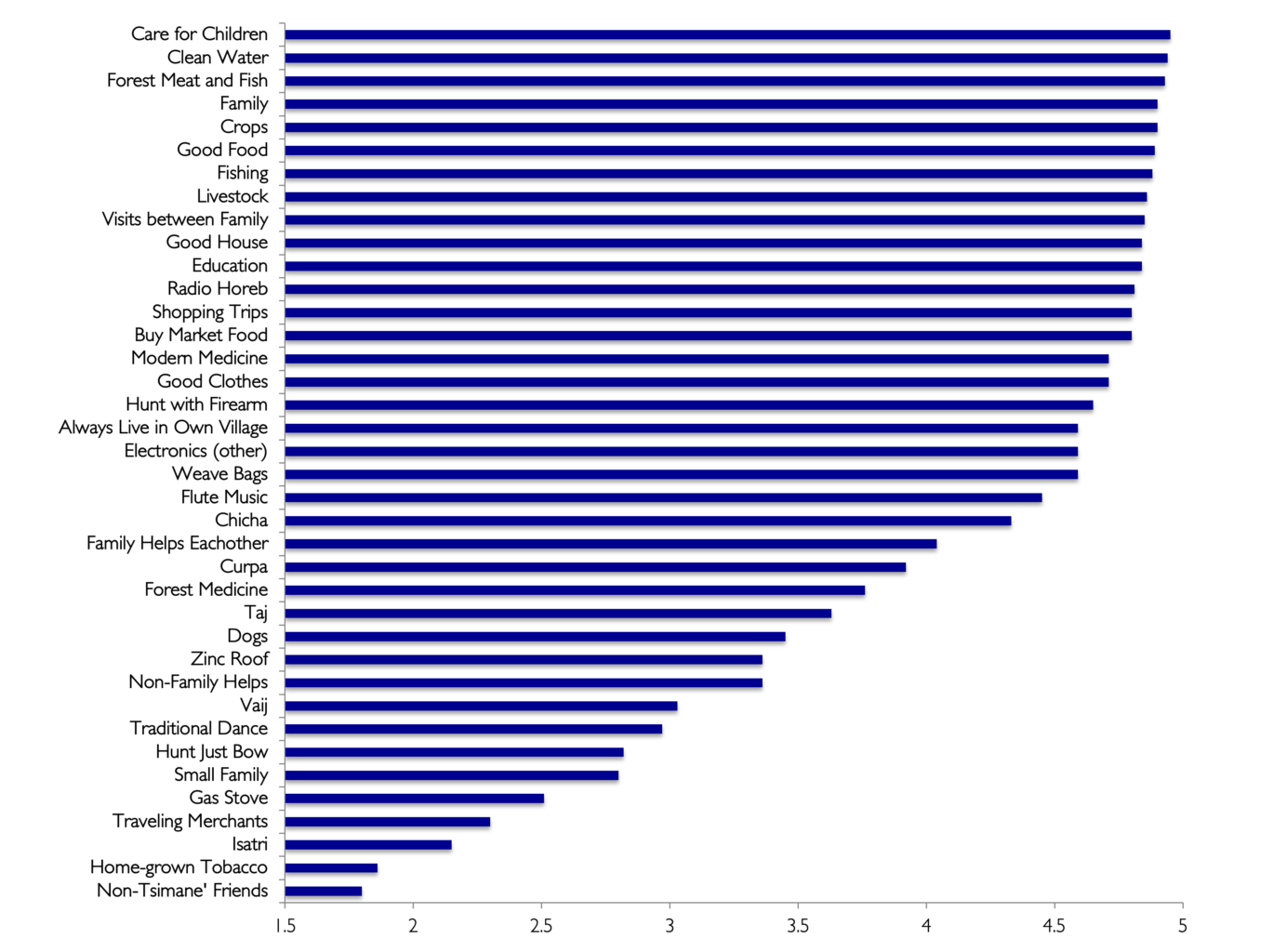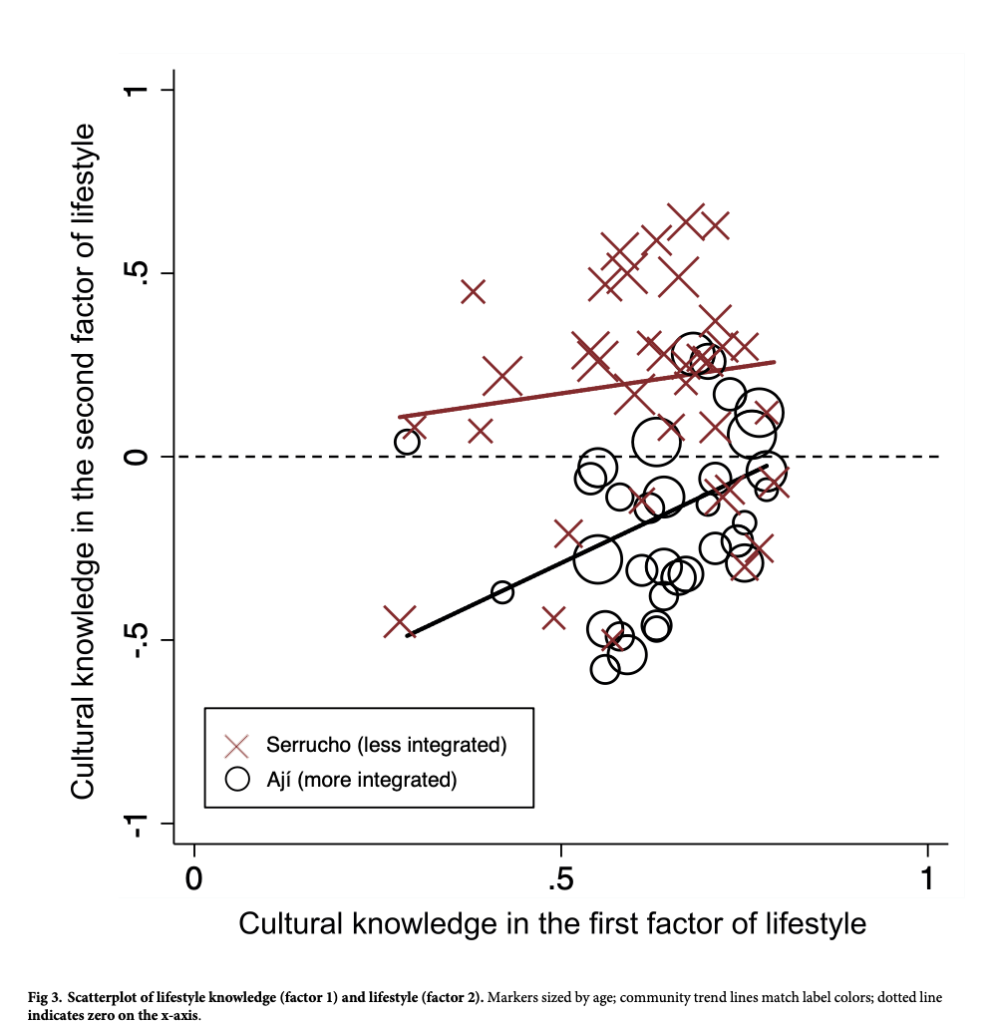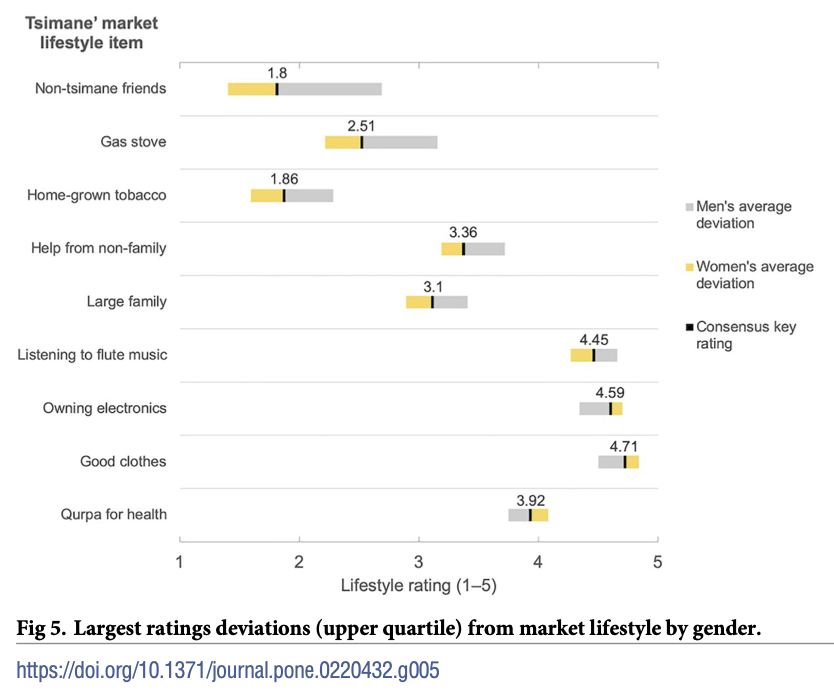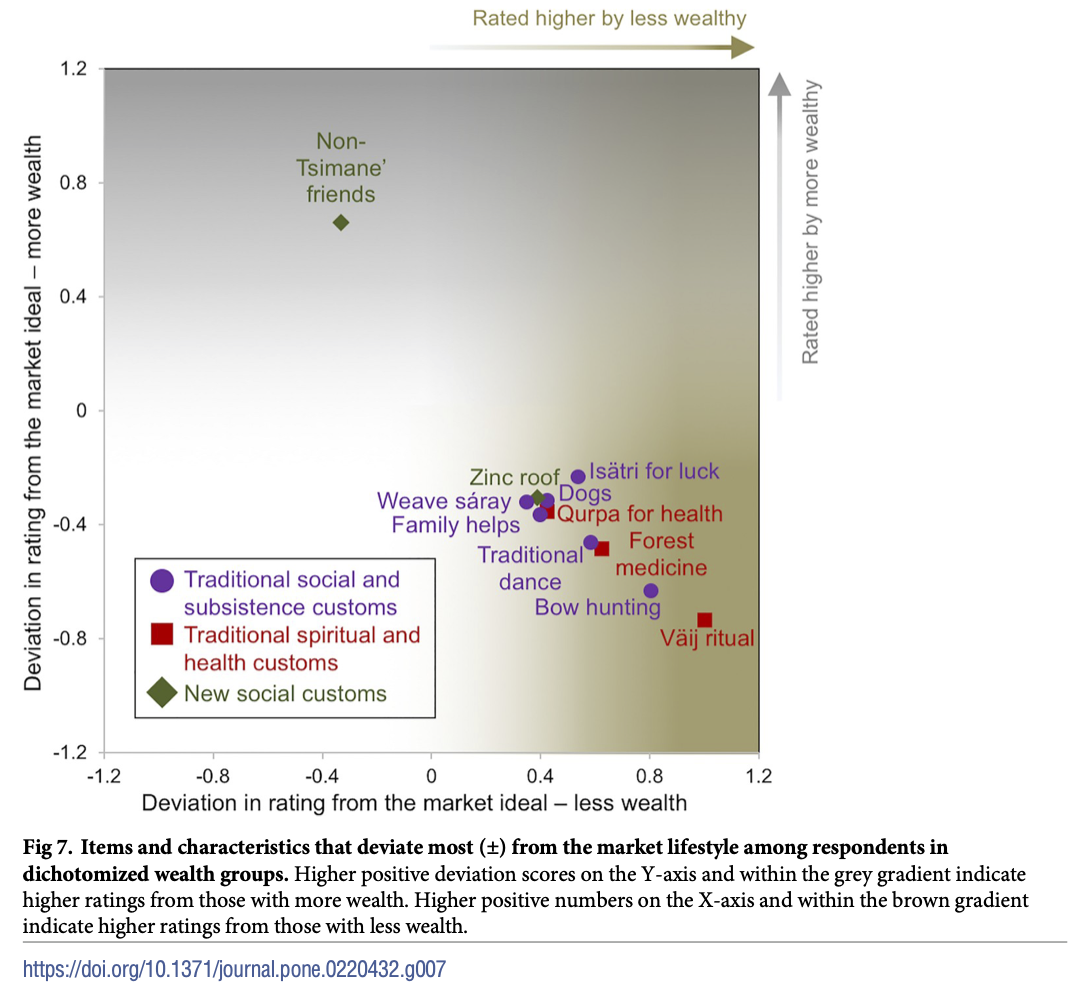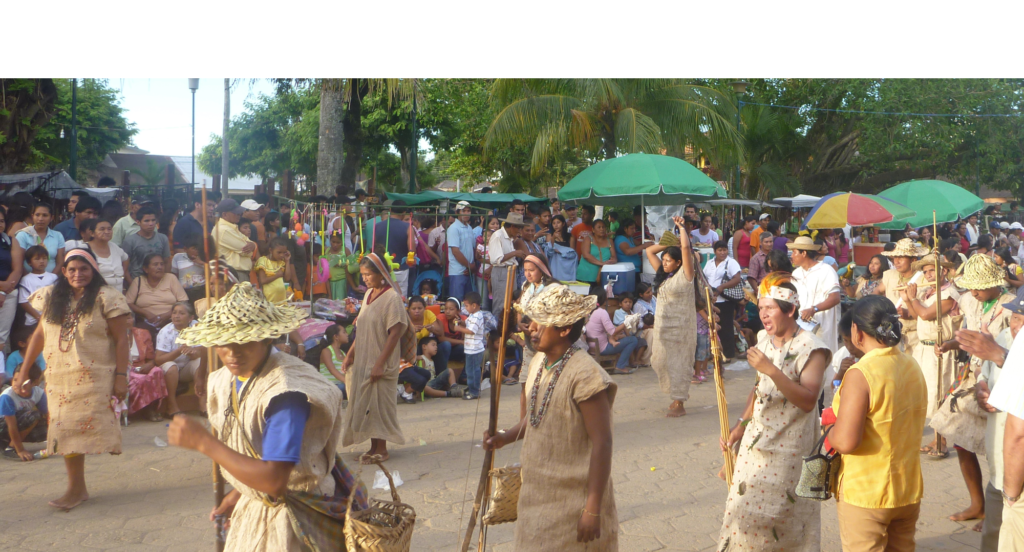
Tsimane’ Sensemaking and Well Being: Translating Research into Action in Amazonia
An NSF-funded project to improve the impact of research findings for a highly-researched indigenous group known for having the best heart-health in the world, the Tsimane’ of Bolivian Amazonia.
Quick Look
My Role
I led ethnographic, semi-structured and survey research on Tsimane’ sensemaking around the concept of well being (see Madsbjerg), including all phases of qualitative and quantitative research. I also delivered briefs on my results to Tsimane’ leaders in the context of their ongoing problems.
Impact
By helping to articulate how Tsimane’ culture helps to promote this group’s best-in-the-world heart health, local leaders were able to defend against political attacks against them as ‘backwards’ and ‘worthless’ and argue that Tsimane’ culture is valuable beyond just different diets and physical activity levels.
Next Steps
I completed a PhD dissertation on this work at U Florida, presented findings at numerous public and professional forums, and published a mixed methods paper in PLoS ONE. Subsequent research has focused on the world the Tsimane’ are integrating into rather than just studying them in isolation.

Project Overview
Translating Research into Action in Amazonia
CHALLENGE
Determine the role of cultural lifestyle perceptions versus behaviors in predicting health outcomes for the Tsimane’, an indigenous society in Bolivian Amazonia with the world’s best heart health but high research fatigue. Then translate findings to leaders.
PROCESS
Trained and led a team of four Bolivian researchers using generative and observational methods, including ethnography, participant observation, free-listing/card sorts, and a quantitative field study with biomarkers across 8 communities to test cultural ideals against behaviors and health.
IMPACT
We produced Tsimane’ sensemaking models related to well being that could be studied against health outcomes for the first time. Tsimane’ leaders used our study results linking their culture to their extraordinary health to help challenge outsiders’ stereotypes of their lifestyle as “worthless” and “backwards.”
WHAT DIDN’T WORK
Research results are only as powerful as those who understand and can act on them. For Tsimane’ leadership, though they were happy to use our initial results, a continued dearth of resources and strong outside political pressures have limited their capacity to take further action based on research findings.
Methods
Open-ended methods
2
Years participant-observation
2
Ethnographic communities
2
Languages used (Tsimane’ & Spanish)
Semi-structured methods
46
In-depth Interviews
45
Free lists to exhaust knowledge of Tsimane’ well being
69
Ratings and rankings exercises on well being
Epidemiologic survey
8
Survey communities
19
Survey modules
209
Survey participants (206 who gave samples for cortisol analysis of stress)
Example Methods Used
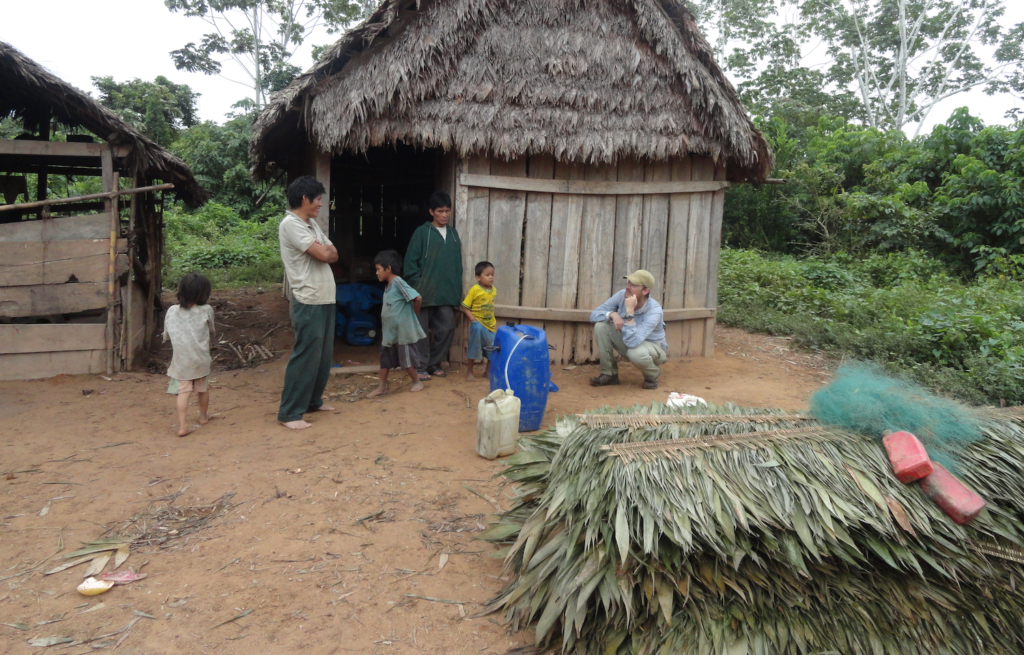
Participant Observation 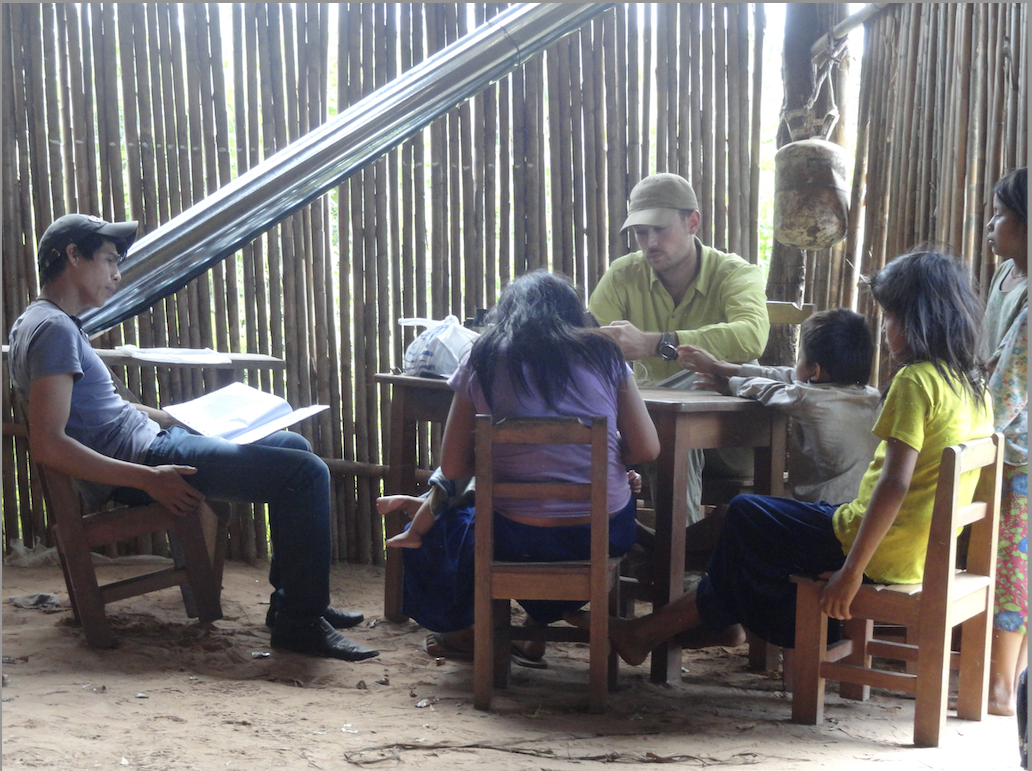
In-depth Interviews
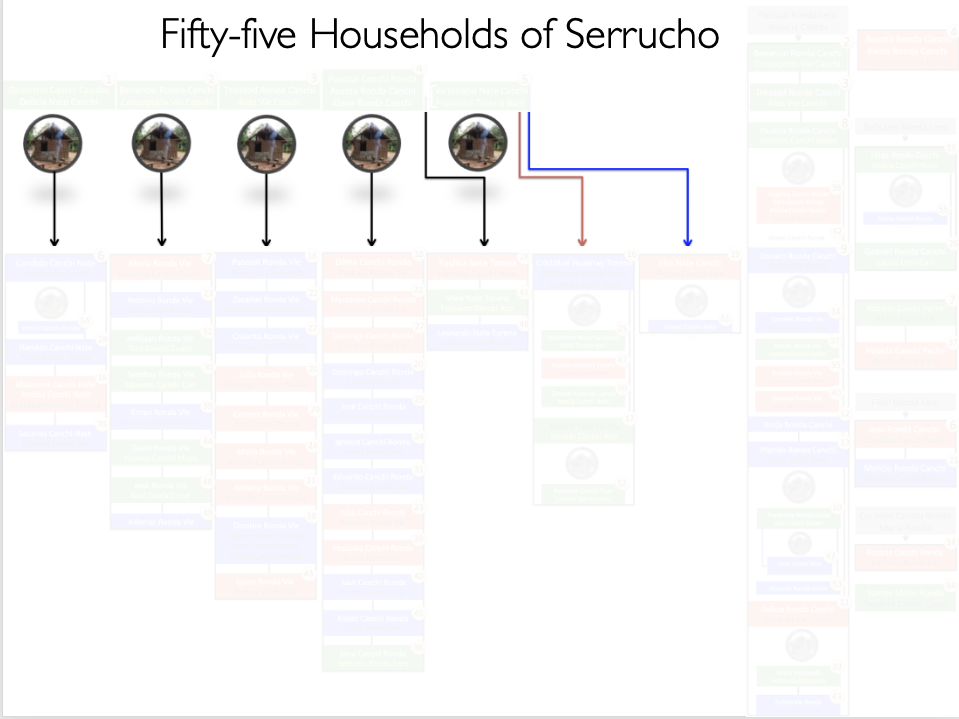
Ethnographic Research 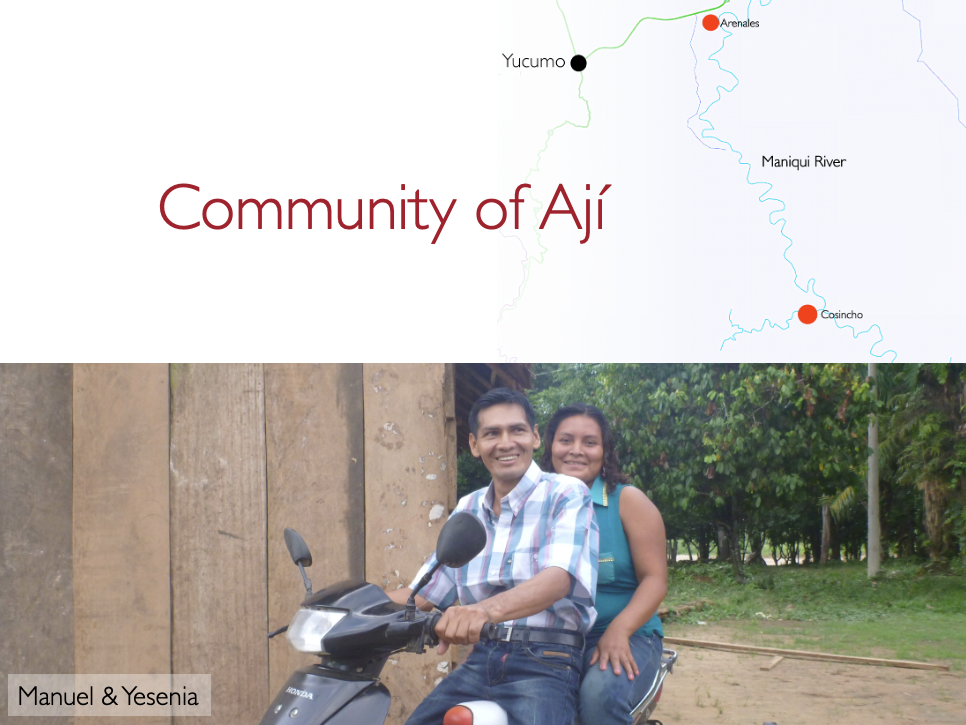
Vignettes & Personas
Methods Highlight
Free listing: Elicit what really matters from people, rather than having them organize things you assume matter. Cognitive anthropologists use this and other techniques to help measure consensus, or sensemaking, in a culture.
Analysis of free lists is an inductive and interpretive process that is very similar to search-log analysis for internal websites that UX researchers use to identify pain points (see more on log analysis at Nielsen Norman).
Free listing allows participants to describe how they understand their culture, without us defining it for them.
And if you ask enough people to list everything they know, you can exhaust knowledge and empirically identify the contents of a cultural domain like lifestyle.
Eliciting what is meaningful from users is vital in product development and evaluation as well, because many times users have little-to-no familiarity with the way designers and engineers talk about usability and function. Users’ conception of items, not just how they’re organized, are frequently different from ours.
Key to all of this is that respondents’ personal preferences are frequently disconnected from their behaviors. But group cultural priorities are more often predictive of behaviors and health outcomes. That’s why we ask respondents about what is expected of them and others in their group, culture or community.
Analysis
We used free-listing to generate all the components of the ideal–or best–life in Tsimane’ communities according to respondents. Then we clumped these into discrete items and asked people to rate the most frequently mentioned components. Only then did we use card sorts to learn how people organized the good life. Their culturally meaningful good life, not ours.
Group expectations varied by subgroups of those who were most- and least-integrated into the market economy through trade and sales. These behaviors were reshaping culture.
Group expectations also varied by gender, with women more attuned to what was being prioritized by a more market-integrated lifestyle.
Card sorts and analysis of in-depth interviews informed groupings of items for subgroups. Here, wealthier respondents thought non-Tsimane’ friends were more culturally important. The more-wealthy also devalued the cultural importance of traditional social and subsistence activities.
Results and Impact
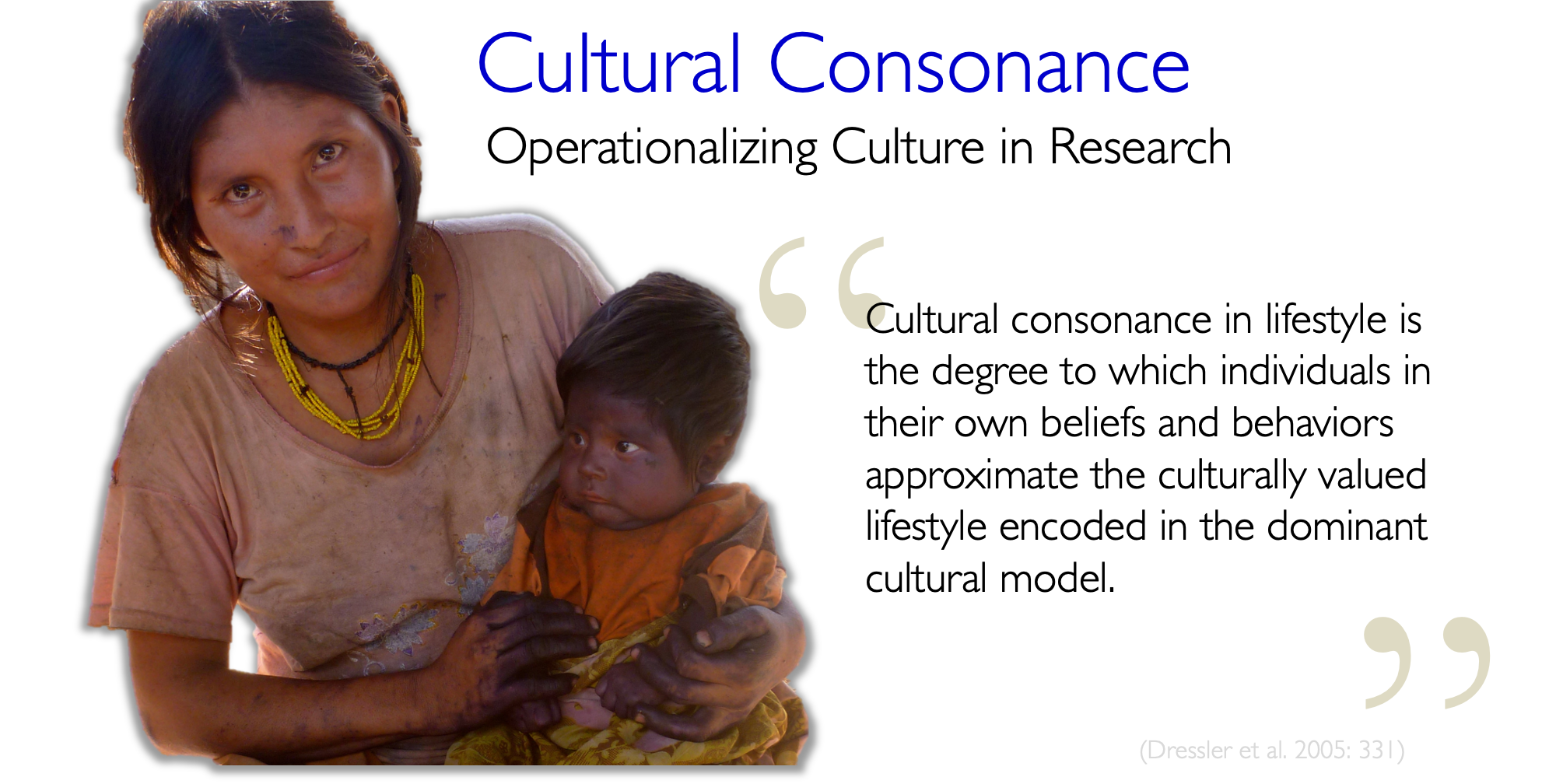
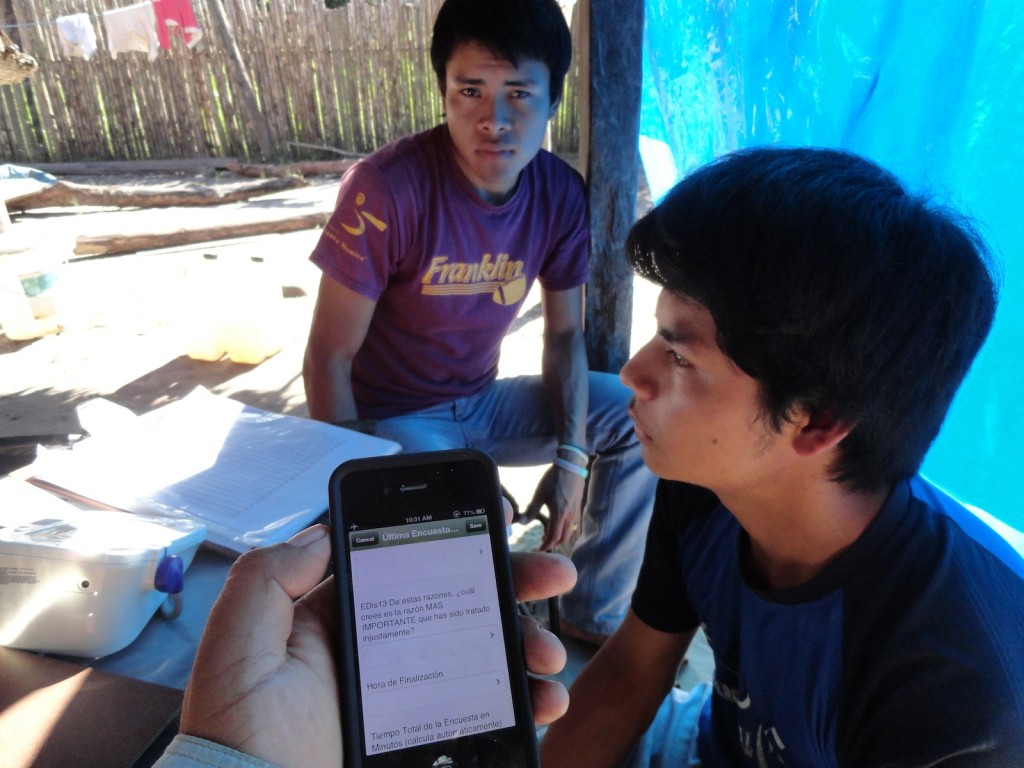
Once the cultural model of sensemaking around well being was established (see Schultz 2019), we did an epidemiologic survey to test whether behavior that matched cultural expectations predicted better health. We found that those with behavior consonant with expectations had lower blood pressure and lower body fat, to a clinically significant degree.
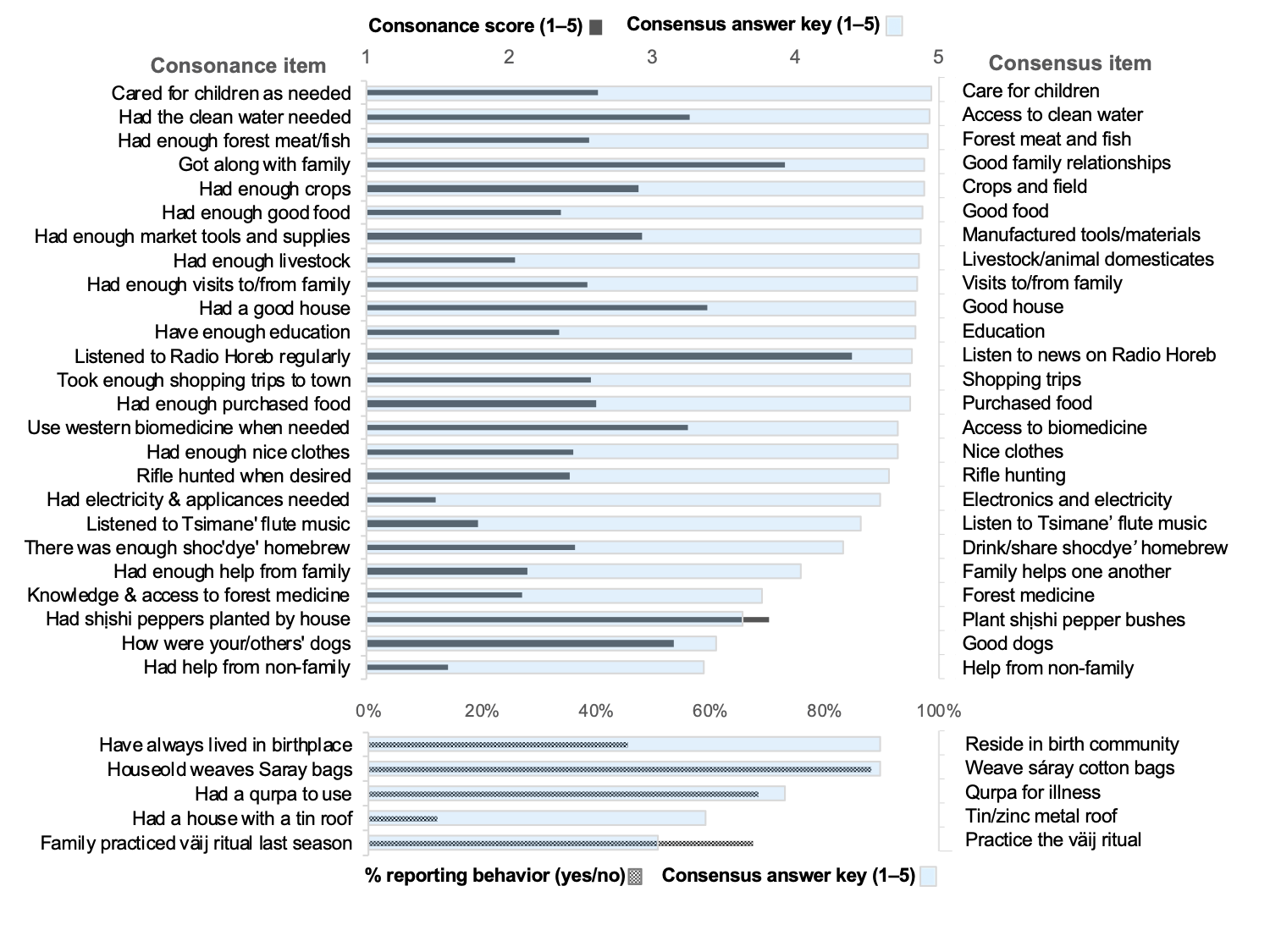
Impact Highlight
Translating Results into Action: The Grand Consejo Tsimane’ (governing body of the Tsimane’ people) used our results showing the strong connection between Tsimane’ cultural lifestyle and health, to defend against political attacks from settlers who aimed to paint the group and its customs as ‘backwards’ and ‘worthless.’
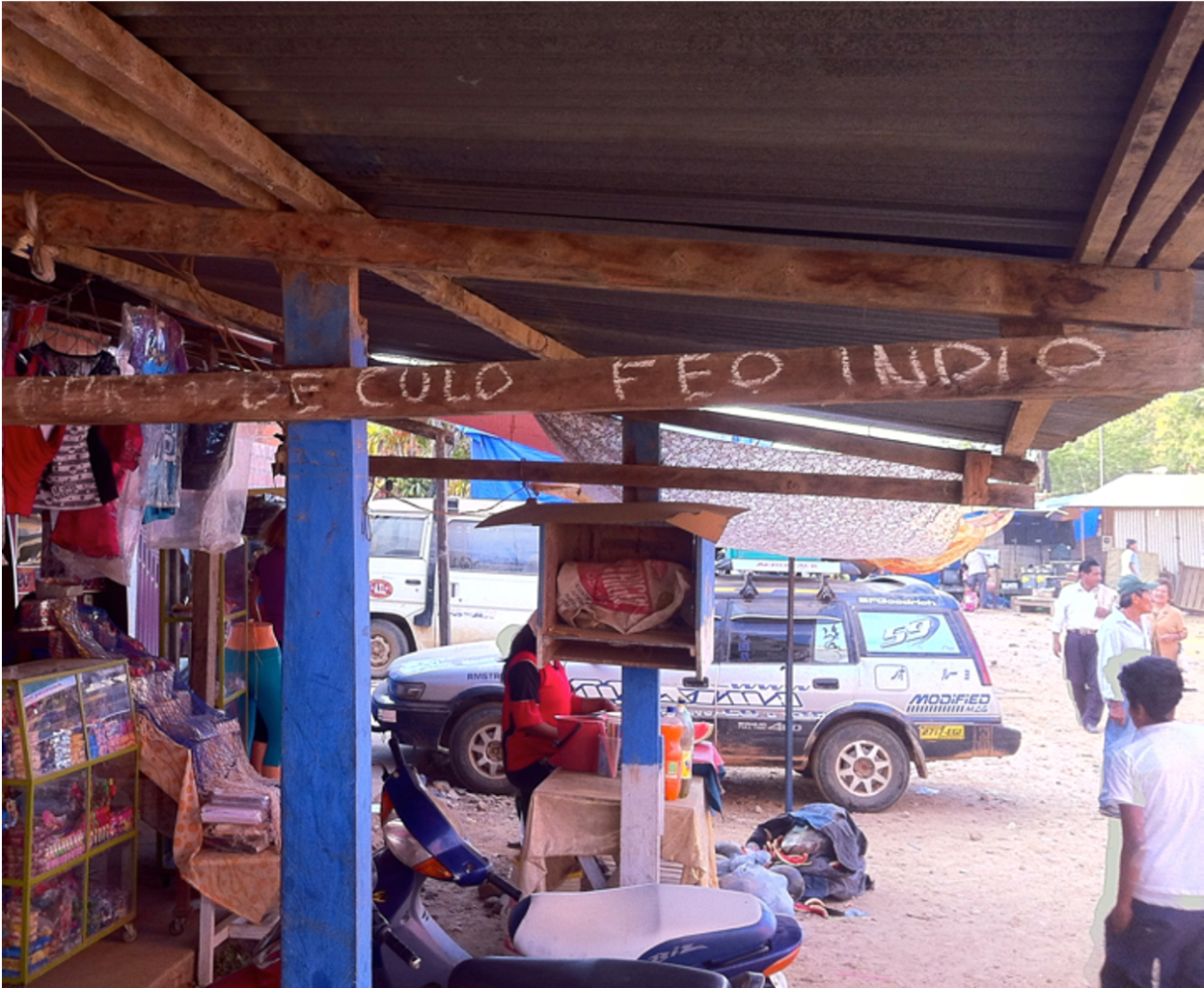
A sample of Tsimane’ culture: a Tsimane’ hunting song
Vaj Tsun’ O’do’ (We’re Spider Monkeys)
Read more about the results in my peer-reviewed article
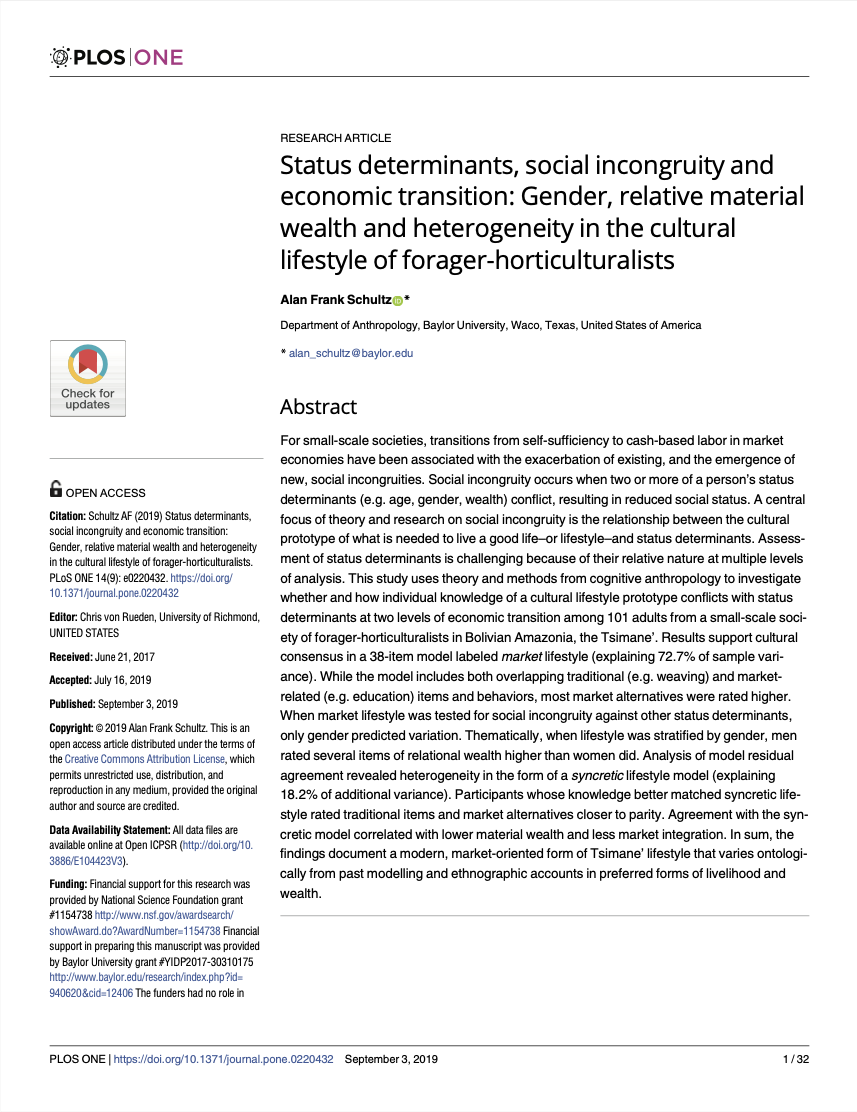
Next, you can check out some of my other projects or if you have any questions about the research process for this study, feel free to contact me and I would be happy to discuss it in more detail.

